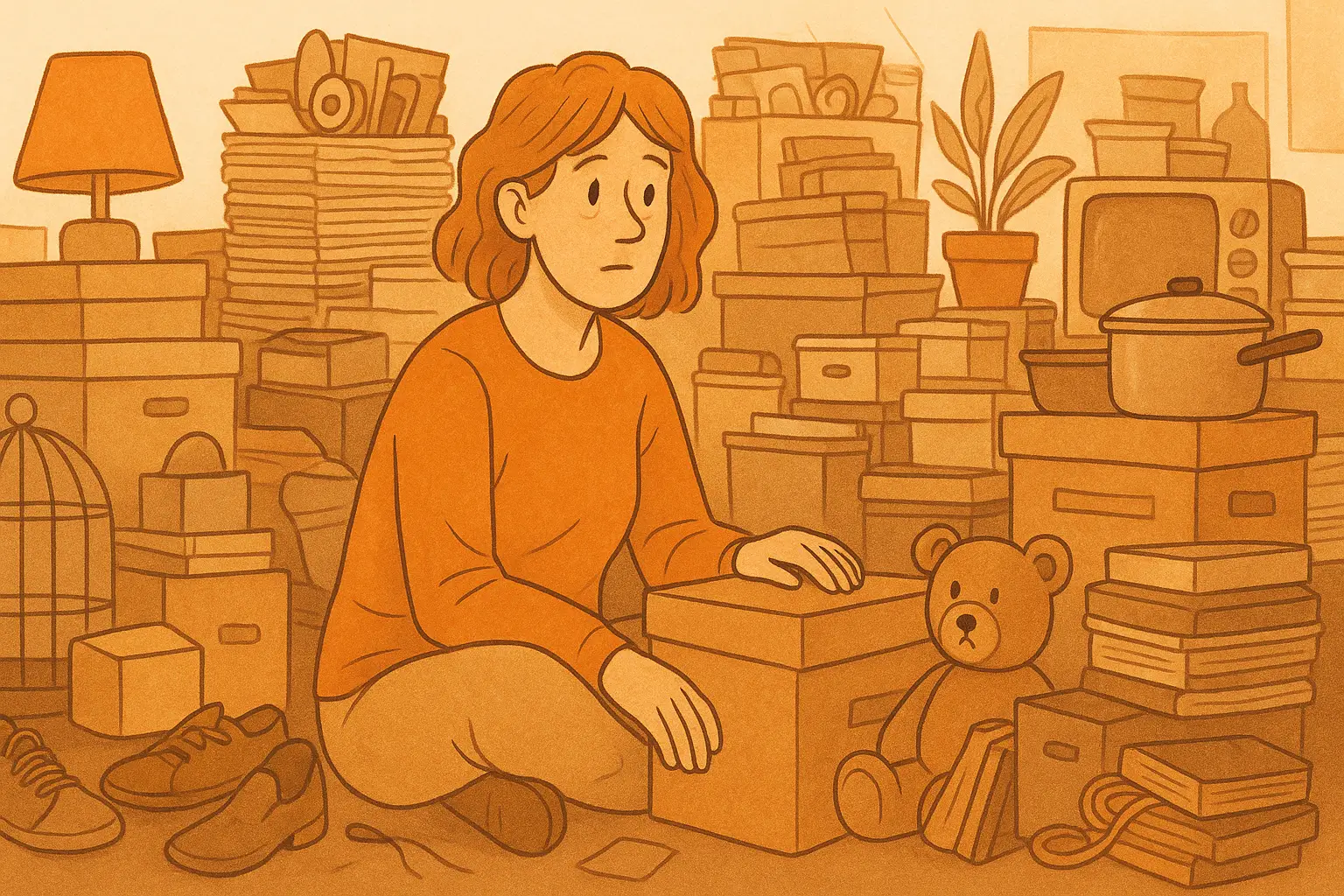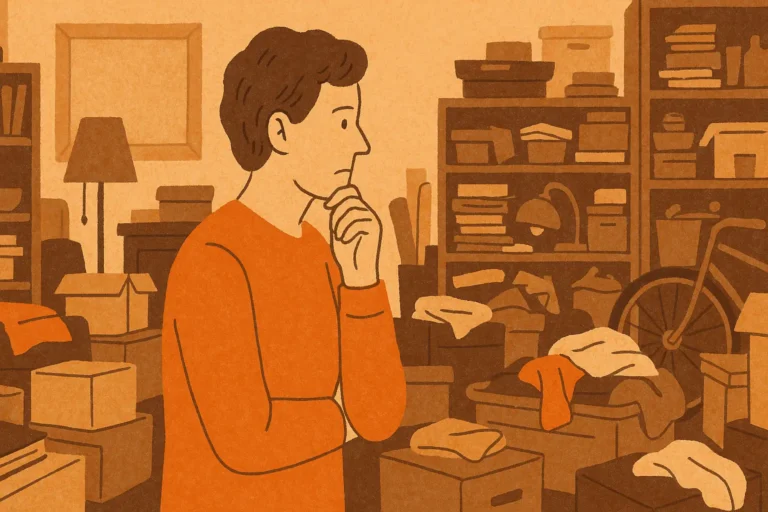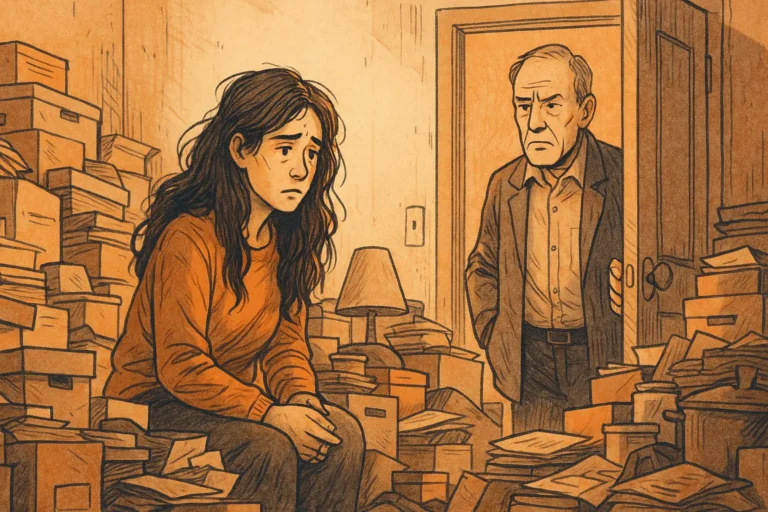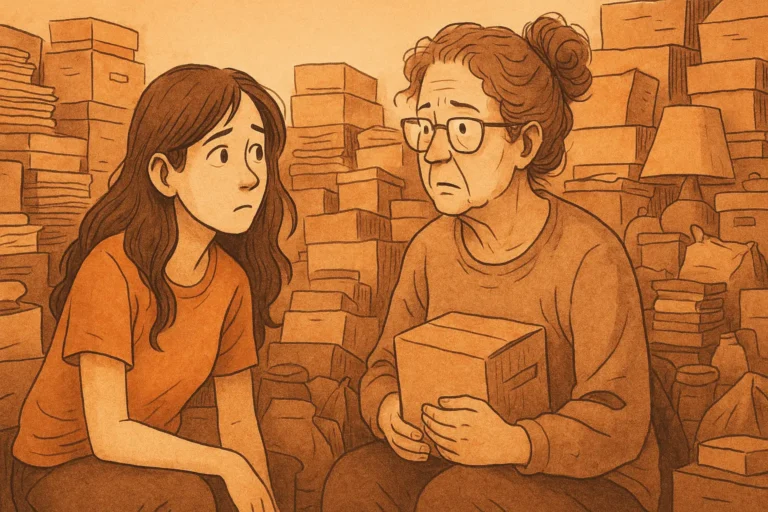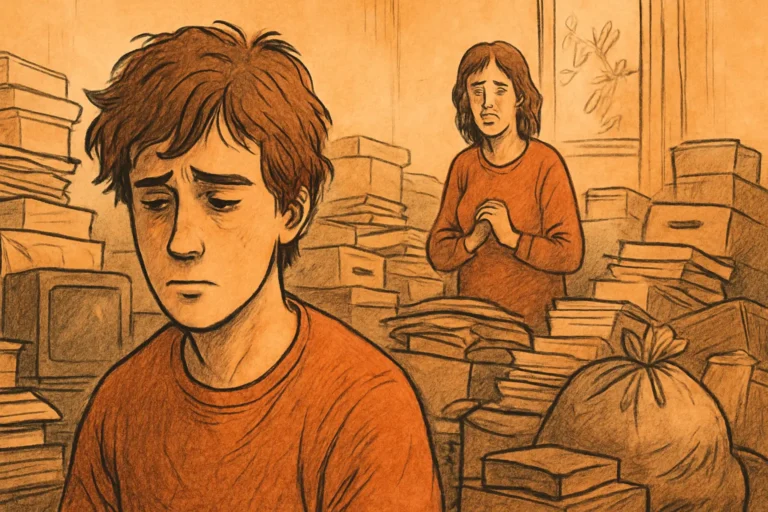What Types of Things Do People With Hoarding Disorder Keep?
Hoarding disorder often leads people to keep a wide variety of items — from stacks of newspapers to broken electronics — even when those things no longer have any practical use. Many also hold onto sentimental items, multiples of the same object, or things they believe might be useful “someday.”
Everyday Items That Pile Up
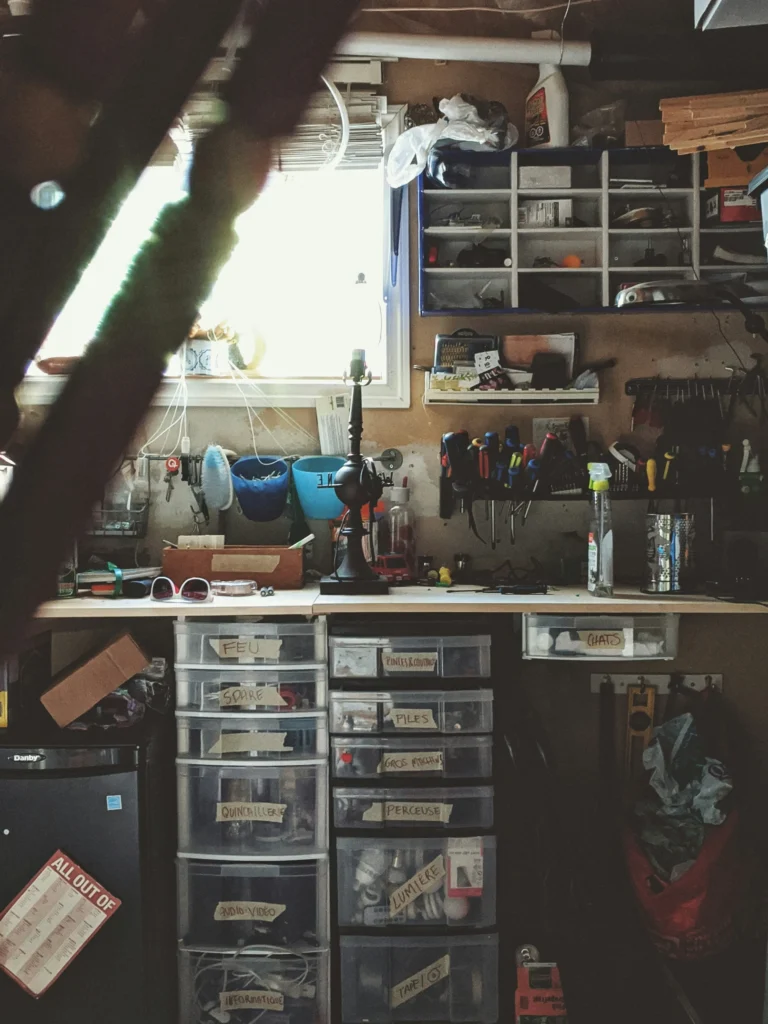
One of the most common categories is ordinary household items. Things like newspapers, magazines, cardboard boxes, and plastic bags can start to fill up rooms.
For someone without hoarding disorder, tossing yesterday’s paper is no big deal. But for a person with hoarding tendencies, it might feel like throwing away potential information or a memory. Even an empty Amazon box might be kept “just in case it’s useful for storage later.”
Clothing and Accessories
Closets are another hotspot. People with hoarding disorder may keep clothes that no longer fit, are worn out, or have been out of style for years. Shoes, hats, scarves, and handbags may also be saved long past their practical use.
Sometimes the attachment comes from sentimental value — a dress worn at a wedding, a jacket from a first job. Other times, it’s the belief that the item might be needed in the future, even if it hasn’t been worn in a decade.
Food and Kitchen Items
Pantries and kitchens can be packed with expired canned goods, sauces, or snacks. The person might think, “It’s still good” or “I don’t want to waste food.” Even when the expiration date has long passed, the idea of throwing it out can cause distress.
Kitchen tools, small appliances, and cookware can also stack up. A broken toaster might be kept because “it could be fixed one day.” Duplicates — three can openers, five spatulas — are common too.
Paperwork and Mail
Papers are one of the hardest things for many hoarders to part with. Bills, bank statements, receipts, greeting cards, and even junk mail may be kept in piles.
The reasoning varies: some fear they might need a specific document later, while others feel sentimental about a handwritten note. Over time, these papers can take over desks, tables, and entire rooms.
Sentimental Items
Sentimental objects often have the strongest hold. Childhood toys, old school projects, souvenirs from trips, or gifts from loved ones may be saved, even if they’re broken or stored in boxes for years.
For someone with hoarding disorder, these items aren’t just “things” — they’re tied to memories and emotions. Throwing them away can feel like losing a part of themselves or their past.
Collections That Grow Out of Control
Some people collect specific items — stamps, figurines, coins, dolls — and over time, the collection can take up significant space. What might start as a hobby can turn into a major clutter issue if it’s not managed.
Sometimes, the items being collected aren’t traditional collectibles at all. It could be bottle caps, rocks, or empty perfume bottles. The key point is that they feel important to the person, even if others see them as trash.
Broken or Unusable Items
A broken lamp, a cracked mirror, or an old cell phone with a dead battery might seem like trash to most people. But to someone with hoarding disorder, these objects hold potential.
They might think, “I’ll fix it one day,” or “I can use parts from it for something else.” Unfortunately, that day rarely comes, and the items keep piling up.
Freebies and Bargain Finds
Promotional items, free samples, and cheap sale items can be hard to resist for someone with hoarding tendencies. Pens from a bank, free calendars, tote bags from events — all might be kept “because they were free” or “too good to waste.”
Garage sales and thrift stores can also feed the habit. A bargain purchase might not be needed at all, but the low price makes it feel worth keeping.
Pets and Animals
In some cases, hoarding can extend beyond objects. Animal hoarding is when a person keeps more pets than they can properly care for.
It often starts with good intentions — rescuing strays or taking in unwanted pets — but over time, it can become unmanageable. The living conditions can suffer, affecting both the animals’ health and the person’s well-being.
Digital Hoarding
Hoarding isn’t always physical. Some people keep thousands of computer files, emails, photos, or apps they’ll never use.
Digital clutter might seem harmless because it doesn’t take up physical space, but it can cause stress and overwhelm in a similar way to physical hoarding.
Why People Keep These Things
It’s important to understand that hoarding disorder isn’t just about “being messy” or “liking stuff.” For many, the items represent safety, memories, or future usefulness.
Throwing things away can cause real anxiety. Sometimes, the fear of making a wrong decision — “What if I need this later?” — stops them from letting go.
The Emotional Side of Hoarding
Hoarded items are often tied to strong emotions. A box of old letters might bring back memories of a loved one. A stack of magazines might represent hobbies or interests they once enjoyed.
Even seemingly random items can hold meaning that’s not obvious to others. That’s why simple advice like “just throw it away” often doesn’t work.
When Everyday Clutter Becomes a Problem
Many people keep a few extra items “just in case.” The difference with hoarding disorder is that the clutter starts interfering with daily life.
Rooms become unusable, safety hazards appear, and relationships can suffer. The sheer volume of items can make cleaning, moving, or even walking through the house difficult.
Small Signs That Things Are Piling Up
It doesn’t happen overnight. Hoarding usually builds up slowly over years. Early signs might include:
- Difficulty throwing away common items like receipts or containers
- Keeping multiples of things rarely used
- Feeling anxious at the thought of decluttering
- Avoiding having guests over because of clutter
Recognizing these signs early can help before it becomes overwhelming.
Helping Someone Who Hoards
If you know someone with hoarding disorder, approaching the situation with kindness and patience is key. Pushing them to get rid of items quickly can backfire.
Instead, offer support in small steps. Encourage them to seek professional help, such as a therapist who specializes in hoarding behaviors. Sometimes, structured programs and gradual decluttering plans can make a big difference.
A Final Thought
People with hoarding disorder keep all kinds of things — from sentimental treasures to what others see as trash. What matters is not the item itself, but the meaning and emotions attached to it.
Understanding the “why” behind hoarding is the first step in helping someone work toward a healthier, safer living space.

